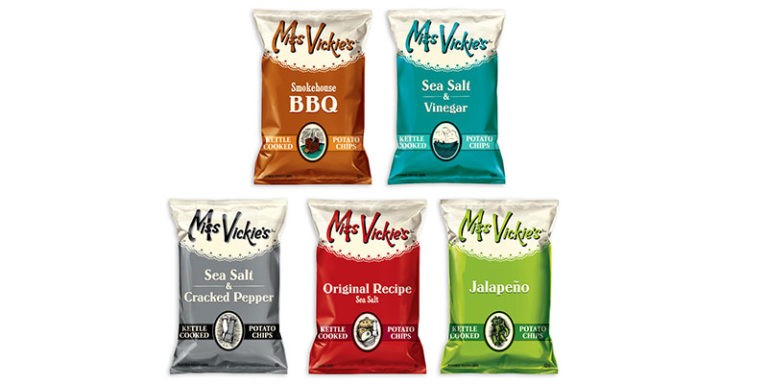If you want to try potato chips with ketchup, dill pickle flavor or seasoned with all you can think of – at the same time! – Canada is the perfect place for your next visit. The US might hold the biggest share of the Canadian potato chips market, thanks to greater volumes and a larger distribution network, but domestic manufacturers are not to be underestimated. Some of them also distribute their products across the border and are bringing Americans distinctive tastes that they can’t get at home. Barbara Zec looked for PPI into all the shades of this colorful market.
Three of the five most popular potato chips brands in Canada belong to the American company Frito-Lay, the snack food division of PepsiCo. The global brands Lay’s and Ruffles rule the Canadian market and one brand with Canadian origins, Miss Vickie, holds fourth place, according to Euromonitor.
Lay’s is the most popular brand in North America and is steadily conquering other markets across the globe. As for the design of the package, it relies on its fame and doesn’t have to “explain” itself on every bag. The bright yellow bag, with an illustration of a sliced potato in the middle and a big logotype above it, has become widely recognized and is a trailblazer for other potato chips brands. While the Original flavor has a signature yellow color, other flavors share a nice palette of varied, subtle colors appropriate for the tastes they illustrate. Clearly, the packaging for the newest additions, such as new flavors, or different shaped chips, can’t be designed exactly the same and needs more detail. For instance, the finalists of this year’s “Do Us A Flavour” competition are packaged in color-coded bags with white space in the middle of the front, where all the details are placed.
In the same year, the Ruffles slogan “Ruffles has ridges” was replaced with “Get your own bag”. Both slogans, for Lay’s and Ruffles, were created by the BBDO advertising company. Frito-Lay is the pioneer of snack food advertising, by packaging chips in sealed bags and offering a ridged variation very early on. These were introduced in 1958 and are much better for dipping because they are thicker and sturdier and harder to accidentally break.
Original Ruffles varieties share a “ridged” background, made from two shades of blue, with a big red logotype in the same style. The middle of the package is reserved for additional information, with an illustration of the chips on a white background framed with colored ribbons bearing the name of the flavor. The Ruffles brand originates from the US, but one flavor made just for the Canadian market became so popular and high in demand that the United States wants to share it with its own consumers. Dana Lawrence, Senior Director of Marketing at Frito-Lay, described that popularity: “To say Ruffles All Dressed has a cult following in Canada is like saying it sometimes snows there a little”. For a limited time, Ruffles All Dressed will be also available in the United States.
Lay’s in Canada was launched in 1996, when the Frito-Lay company decided to rebrand a Canadian potato chips brand that it had acquired a couple of years previously – the Hostess. It was the leading potato chips brand in the country until the 1990s, but with the introduction of more upscale brands such as Kettle Chips and Miss Vickie’s, its popularity started to rapidly decline.
Miss Vickie’s is the last of the three most popular PepsiCo brands in Canada. It was first introduced in 1987 at the annual Alliston Potato Festival and was immediately sold out. The brand was born. Initially made by Canadians Vickie and Bill Kerr, the brand was acquired by Frito-Lay in 1993. The first Miss Vickie’s package was designed by Miss Vickie herself. She wanted people to know that a woman made the product, so she used a lace collar and a bow as the illustration. To show that the recipe and the ingredients were home-made, she also included a drawing of a farm.
